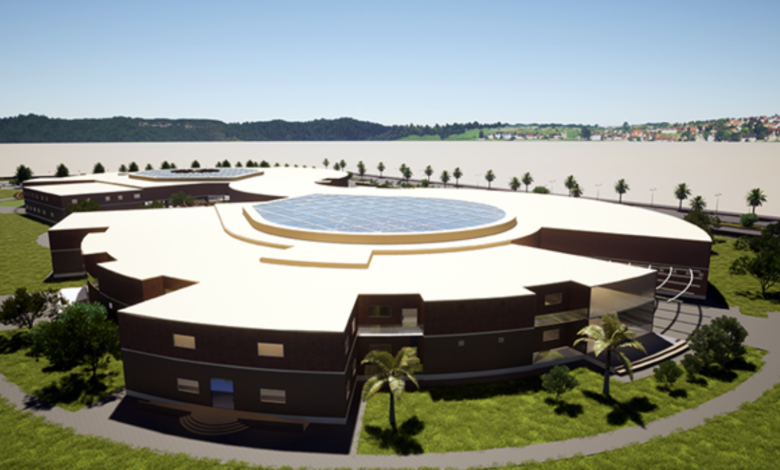Enigma of the Sanakku Complex: A Journey Through History,

Introduction to the Sanakku Complex
The term “Sanakku Complex” may sound mysterious to many, but it carries deep historical, cultural, and societal significance. This article explores the origins, evolution, and contemporary relevance of this unique concept, unpacking its layers to provide a comprehensive understanding. Whether you’re an academic, a history enthusiast, or just curious, this journey will captivate you.
Historical Origins of the Sanakku Complex
At its core, the Sanakku Complex represents a multifaceted structure of traditions, practices, and beliefs that have stood the test of time. Originating from ancient civilizations, it serves as a testament to human ingenuity and cultural resilience. But what exactly is it? To answer this, we must dive deep into its roots and the factors that have shaped its existence.
Tracing Back to Ancient Civilizations
The Sanakku Complex is thought to have originated in the early Mesopotamian era, serving as a hub for religious, administrative, and economic activities. Inscriptions from the Sumerian and Akkadian periods reveal the term “Sanakku” as a title for local rulers or officials, signifying authority and responsibility. This administrative role evolved into something much larger over centuries, incorporating cultural and spiritual dimensions.
The Role of Sanakku in Governance
During the Akkadian Empire, the Sanakku was not merely a political figure but also a custodian of law and order. These leaders played a crucial role in maintaining social harmony, ensuring equitable distribution of resources, and acting as intermediaries between the divine and mortal realms. Their influence extended beyond governance, shaping the socio-religious fabric of their communities.
Symbolism and Significance
The architectural remnants of the Sanakku Complex reflect a profound understanding of spatial dynamics and symbolic representation. Temples, granaries, and administrative offices were often part of these complexes, emphasizing their multifunctionality. These structures symbolized stability, unity, and divine favor, serving as the heartbeat of ancient societies.
Cultural Significance of the Sanakku Complex
Culturally, the Sanakku Complex was a melting pot of rituals and traditions. Festivals, ceremonies, and community gatherings were held within its premises, fostering social cohesion and collective identity. These rituals often revolved around agricultural cycles, celestial events, and mythological narratives, reinforcing the community’s connection to their land and heritage.
Art and Architecture
The artistic and architectural elements of the Sanakku Complex reveal a deep appreciation for aesthetics and functionality. Intricate carvings, reliefs, and sculptures adorned these structures, often depicting gods, mythical creatures, and scenes from daily life. These artistic expressions were not merely decorative but served as a medium of storytelling and cultural preservation.
Educational and Intellectual Hub
In addition to its religious and administrative roles, the Sanakku Complex functioned as an intellectual hub. Scholars, scribes, and artisans gathered here to exchange knowledge and refine their crafts. Libraries and archives within these complexes housed invaluable texts on astronomy, medicine, mathematics, and law, making them centers of learning and innovation
Transition Through Dynasties
As dynasties rose and fell, the Sanakku Complex underwent significant transformations. While its core functions remained intact, its design, scale, and purpose evolved to reflect the priorities of the ruling powers. For instance, during the Neo-Babylonian period, these complexes became more elaborate, incorporating grandiose elements to showcase the empire’s might.
Influence of Religion
The religious aspect of the Sanakku Complex grew more pronounced over time, with temples becoming the focal point of these structures. Deities associated with prosperity, fertility, and protection were venerated, highlighting the community’s reliance on divine blessings for their well-being.
Adaptation to Changing Needs
With the advent of trade and urbanization, the Sanakku Complex adapted to accommodate new functions. Marketplaces, workshops, and storage facilities were integrated into these structures, reflecting their role as economic powerhouses. This adaptability ensured their relevance in an ever-changing societal landscape.
Lessons for Modern Urban Planning
The Sanakku Complex offers valuable insights into sustainable urban planning and community building. Its emphasis on multifunctionality, accessibility, and cultural integration serves as a blueprint for modern cities striving to balance growth with heritage conservation.
Preserving Cultural Heritage
In a world grappling with rapid globalization, the Sanakku Complex reminds us of the importance of preserving cultural heritage. Efforts to study, restore, and protect these ancient structures are crucial for maintaining a connection to our past and fostering a sense of identity.
Inspiring Modern Architecture
Architects and designers today draw inspiration from the Sanakku Complex’s intricate designs and harmonious layouts. By blending traditional aesthetics with contemporary functionality, they create spaces that resonate with both history and modernity.
Limited Archaeological Evidence
Despite its significance, the Sanakku Complex remains shrouded in mystery due to limited archaeological evidence. Many of these structures have succumbed to natural disasters, wars, and neglect, leaving researchers to piece together fragments of history.
Interpreting Ancient Texts
Deciphering the texts associated with the Sanakku Complex is another challenge. Linguistic nuances, contextual variations, and incomplete records make it difficult to fully understand their historical and cultural implications.
Balancing Conservation and Development
Preserving the Sanakku Complex while accommodating modern development poses a delicate challenge. Striking a balance between conservation efforts and urban expansion requires careful planning and collaboration among stakeholders.
Representation in Literature and Media
The mystique of the Sanakku Complex has inspired countless works of literature, films, and documentaries. Its portrayal often highlights its enigmatic nature, inviting audiences to explore its history and significance.
Symbol of Unity and Resilience
In popular culture, the Sanakku Complex symbolizes unity and resilience, reflecting humanity’s ability to adapt and thrive in the face of adversity. Its story serves as a source of inspiration for individuals and communities alike.
Educational Outreach
Museums, exhibitions, and educational programs centered around the Sanakku Complex have played a pivotal role in raising awareness and fostering appreciation for this cultural treasure.
Conclusion: The Timeless Appeal of the Sanakku Complex
The Sanakku Complex is more than just an architectural marvel; it is a testament to the ingenuity, resilience, and creativity of ancient civilizations. Its rich history, cultural significance, and enduring legacy continue to captivate scholars, artists, and enthusiasts worldwide.
By studying and preserving the Sanakku Complex, we not only honor our ancestors but also gain valuable insights into building a harmonious and sustainable future. Let us celebrate this remarkable heritage and ensure its story is passed on to future generations.





